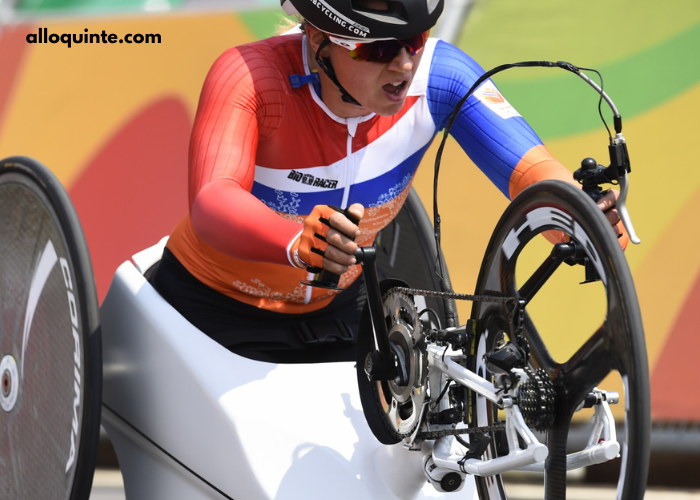Sports have always been an integral part of human culture and society. From ancient civilizations to the modern era, sports have evolved, adapted, and thrived. The essence of competition, physical prowess, and the pursuit of excellence drive athletes and fans alike. Over the years, sports have witnessed numerous innovations that have transformed the way they are played, watched, and experienced. In this article, we will delve into some of the game-changing innovations in modern sports that have reshaped the landscape and captivated audiences around the world.
Technological Advancements
The integration of technology into sports has been nothing short of revolutionary. These innovations have not only enhanced the performance of athletes but also enriched the viewing experience for fans.
Video Replay and Instant Decision Making
One of the most significant technological advancements in modern sports is the introduction of video replay and instant decision-making systems. In various sports, including football (soccer), American football, tennis, and cricket, video replay technology is used to review crucial decisions made by referees or officials. This helps ensure fairness and accuracy in determining outcomes.
For example, in football (soccer), the Video Assistant Referee (VAR) system allows referees to review key incidents, such as goals, penalties, and offside decisions, with the assistance of video footage. This has reduced controversial calls and increased the overall fairness of the game.
In American football, the use of instant replay has become a fundamental part of the game. Coaches can challenge certain calls, and officials can review plays to determine if a call was correct. This has not only improved the accuracy of officiating but also added an element of strategy as coaches strategically decide when to challenge calls.
Wearable Technology
Athletes now have access to advanced wearable technology that provides real-time data on their performance. Devices such as GPS trackers, heart rate monitors, and accelerometers help athletes and coaches analyze various aspects of performance, including speed, endurance, and recovery.
In sports like soccer, these wearables are used to monitor players’ distance covered, speed, and physiological data during matches and training sessions. This information can be used to make tactical adjustments, prevent injuries, and optimize training regimes.
Hawk-Eye Technology
Hawk-Eye technology has become synonymous with accuracy in tennis and cricket. It uses a system of cameras to track the trajectory of the ball and accurately determine whether it is in or out of bounds. This technology has eliminated disputes over line calls and added a level of certainty to these sports.
Sports Analytics
The advent of big data and analytics has revolutionized the way sports are played, coached, and analyzed. Data-driven insights have allowed teams and athletes to make more informed decisions and gain a competitive edge.
Moneyball and Sabermetrics
The concept of “Moneyball” popularized by Michael Lewis’s book and subsequent film adaptation, focused on how the Oakland Athletics baseball team used data-driven strategies to compete with bigger-budget teams. This approach, based on sabermetrics, involves analyzing player statistics to identify undervalued talent and make strategic decisions.
Moneyball and sabermetrics have since been adopted in various sports, including basketball, soccer, and cricket. Teams use advanced analytics to evaluate player performance, optimize lineups, and make data-driven decisions on player acquisitions and trades.
Performance Analysis
Performance analysis in sports involves the systematic collection and analysis of data to gain insights into team and player performance. This includes tracking player movements, ball trajectory, and various performance metrics.
In basketball, for example, performance analysts use player tracking technology to monitor movements on the court, assess shot efficiency, and strategize defensive plays. Similarly, in soccer, performance analysis helps teams study opponents, assess set-piece tactics, and identify areas for improvement.
Sports Medicine and Injury Prevention
Advancements in sports medicine have significantly improved the longevity and well-being of athletes. These innovations have not only helped athletes recover from injuries but also prevent them in the first place.
High-Tech Rehabilitation
Rehabilitation techniques for sports-related injuries have evolved with the integration of technology. Athletes now have access to state-of-the-art rehabilitation equipment, such as underwater treadmills, cryotherapy chambers, and robotic exoskeletons, which help them recover faster and more effectively.
Underwater treadmills, for instance, provide a low-impact environment for athletes to regain strength and mobility while minimizing the risk of further injury. Cryotherapy chambers offer quick and localized cold therapy to reduce inflammation and speed up recovery.
Injury Prevention Programs
Many sports organizations now employ injury prevention programs that use data analytics to identify injury-prone players and assess their risk factors. These programs incorporate customized training regimes, recovery strategies, and monitoring protocols to reduce the likelihood of injuries.
For example, in basketball, teams utilize biomechanical analysis to identify players at risk of injuries, especially to the knees and ankles. Athletes then engage in specific exercises and drills to strengthen vulnerable areas and reduce the risk of injury.
Virtual and Augmented Reality
Virtual and augmented reality technologies have found their way into the world of sports, offering immersive training experiences and enhanced fan engagement.
Training Simulators
Virtual reality (VR) and augmented reality (AR) are used to create realistic training environments for athletes. In sports like golf and baseball, VR simulators allow players to practice their swings and pitches in a virtual setting, providing instant feedback and analysis of their performance.
In American football, quarterbacks can use VR to simulate game scenarios, read defenses, and make decisions in a controlled environment. This not only enhances their decision-making skills but also reduces the risk of injury during practice.
Fan Engagement
Augmented reality has been used to enhance the fan experience in various sports. Apps and devices allow fans to view real-time statistics, player information, and augmented overlays during live games. This interactive experience keeps fans engaged and informed throughout the event.
Sustainability and Environmental Initiatives
In recent years, sports organizations and venues have made significant strides in adopting sustainable practices and reducing their environmental impact.
Green Stadiums
Many stadiums and arenas are implementing green technologies to reduce energy consumption and minimize their carbon footprint. Solar panels, LED lighting, and advanced HVAC systems are being used to make venues more energy-efficient.
For example, the Mercedes-Benz Stadium in Atlanta, home to the Atlanta Falcons and Atlanta United FC, boasts a retractable roof with eight petal-shaped panels covered in solar panels. These panels generate renewable energy to help power the stadium.
Sustainable Events
Major sporting events, such as the Olympic Games and FIFA World Cup, are increasingly focused on sustainability. Host cities are making efforts to reduce waste, promote public transportation, and incorporate eco-friendly practices into event planning.
Esports and Virtual Sports
The rise of esports and virtual sports has expanded the definition of sports and introduced a new form of competitive entertainment.
Esports
Esports, or electronic sports, involve competitive video gaming. It has gained immense popularity, with professional players, teams, and leagues competing for substantial prize money. Esports events fill stadiums and draw millions of online viewers.
Esports titles like League of Legends, Dota 2, and Counter-Strike: Global Offensive have become global phenomena. The esports industry has also seen innovations in broadcasting, with augmented reality graphics, in-game data overlays, and virtual arenas enhancing the viewing experience.




